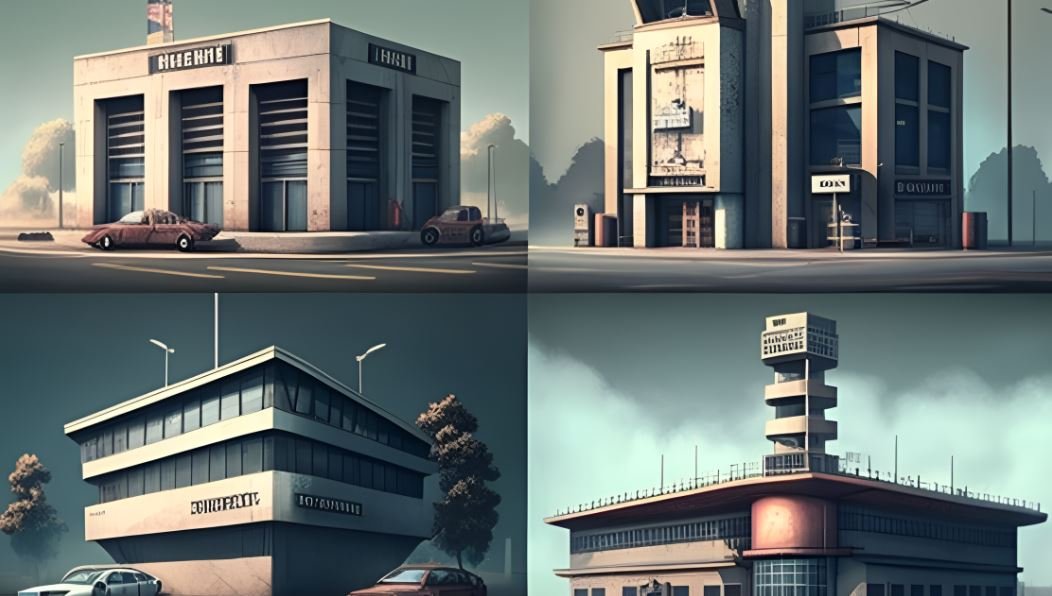How Much Does it Cost to Build a Police Station?
Police stations are essential infrastructure for ensuring public safety, maintaining law and order, and providing security to communities.
Building a police station is a significant undertaking that requires careful planning, budgeting, and coordination between various stakeholders, including local authorities, law enforcement agencies, architects, contractors, and engineers.
Short answer: The cost of building a police station can vary significantly depending on several factors, including location, size, design, materials used, and equipment needed.
According to the International Association of Chiefs of Police, the average cost to build a police station in the United States ranges from $500,000 to $30 million.
The cost of building a police station can be broken down into several categories, including:
Land Acquisition: The cost of acquiring land for a police station can vary depending on the location and size of the property. The cost can range from a few thousand dollars to millions of dollars.
Construction: The cost of construction is the most significant expense in building a police station. The cost of construction includes site preparation, foundation work, framing, plumbing, electrical work, and interior finishes. The cost of construction can range from a few hundred thousand dollars to tens of millions of dollars.
Equipment and Furnishings: The cost of equipping a police station with necessary equipment and furnishings can range from a few thousand dollars to hundreds of thousands of dollars.
Staffing: The cost of staffing a police station includes salaries, benefits, and training. The cost of staffing can vary depending on the size and needs of the facility.
Related Questions
-
The cost of building a police station can be influenced by several factors, such as location, size, design, materials used, and equipment needed.
Additionally, the cost can be influenced by labor costs, local building codes, environmental regulations, and zoning requirements.
-
The primary expenses associated with building a police station include land acquisition, construction, equipment, and staffing.
The cost of each expense can vary significantly depending on the size, design, and location of the police station.
-
The timeline for building a police station can vary depending on several factors, such as size, design, location, and local regulations.
Typically, the construction phase can take several months to a few years, depending on the complexity of the project.
-
According to the National Fire Protection Association, the average cost to build a fire station in the United States ranges from $300,000 to $5 million.
In this blog post, we will explore the question of “how much does it cost to build a police station”, including:
Factors Affecting Cost of Building a Police Station
The cost of building a police station depends on several factors, such as the location, size, design, materials used, and the specific needs and requirements of the local community.
Here are some of the primary factors that can affect the cost of building a police station:
Location: The cost of building a police station varies significantly depending on the location. The cost of land, labor, and materials can differ between urban, suburban, and rural areas.
Additionally, the cost of construction can be higher in regions with higher building codes, environmental regulations, and local zoning requirements.
Size: The size of the police station is another significant factor that affects the cost. A larger police station requires more materials, equipment, and labor to construct, which can increase the overall cost.
The size of the police station will depend on the number of personnel it will house, the number of cells, interview rooms, and other necessary spaces.
Design: The design of the police station can also influence the cost. Complex designs that require specialized materials, equipment, or skilled labor can increase the overall cost.
However, a well-designed police station can increase efficiency, improve functionality, and reduce long-term operating costs.
Materials: The type of materials used in constructing the police station can also affect the cost. High-quality materials, such as steel, concrete, and brick, can be more expensive than cheaper alternatives, such as wood or drywall.
Equipment: The cost of outfitting a police station with necessary equipment, such as desks, computers, communication systems, security cameras, and weapons lockers, can also add to the overall cost.
Types of Police Stations
There are several types of police stations, each with its specific design, functionality, and cost.
The following are some of the most common types of police stations:
Centralized Police Station: A centralized police station is the most common type of police station, and it serves as the primary headquarters for law enforcement in the area.
It typically houses administrative offices, detention facilities, and specialized units, such as detective bureaus, crime labs, and SWAT teams.
Substation: A substation is a smaller, satellite station that serves a specific area within the jurisdiction. It typically provides services such as community policing, report writing, and patrol.
Specialized Facility: A specialized facility is a police station designed to house specialized units, such as K9 units, traffic enforcement, and mounted units. These facilities require specialized equipment and spaces that can increase the overall cost.
Temporary Facility: A temporary facility is a mobile or temporary structure used during emergencies, such as natural disasters or large-scale events.
These facilities can be quickly constructed and provide temporary shelter, communication, and logistical support for law enforcement personnel.
Designing & Constructing a Police Station
The process of designing and constructing a police station can be complex and requires careful planning, coordination, and collaboration between various stakeholders.
Here are the key steps involved in designing and constructing a police station:
Assessment: The first step in designing a police station is to conduct an assessment to determine the specific requirements and needs of the local community.
This assessment includes identifying the number of personnel, detention facilities, interview rooms, evidence storage, and other necessary spaces.
Site Selection: Once the needs assessment is complete, the next step is to select an appropriate site for the police station. The site should be centrally located and easily accessible to the community it serves.
It should also meet zoning requirements, and environmental regulations, and be able to accommodate the size and design of the police station.
Design: After the site is selected, the design phase begins. The design of the police station should be functional, efficient, and meet the needs of the local community.
This phase includes developing the architectural plans, identifying the materials and equipment needed, and creating a budget.
Budgeting: The budget for building a police station can vary significantly depending on the size, design, and location of the facility.
The budget should include all costs associated with the project, such as land acquisition, construction, equipment, and staffing.
Construction: The construction phase involves the actual building of the police station. This phase includes site preparation, foundation work, framing, plumbing, electrical work, and interior finishes.
The construction phase typically takes several months to complete, depending on the size and complexity of the project.
Equipment and Furnishings: After the construction is complete, the police station must be equipped with all necessary equipment and furnishings.
This includes outfitting the facility with desks, computers, communication systems, security cameras, and weapons lockers.
Staffing: Once the police station is operational, it must be staffed with trained personnel to ensure public safety and provide security to the community.
The staffing requirements will depend on the size and needs of the facility.
Conclusion
Building a police station is a significant undertaking that requires careful planning, budgeting, and coordination between various stakeholders.
The cost of building a police station can vary depending on several factors, including location, size, design, materials used, and equipment needed.
It is important to conduct an assessment, select an appropriate site, develop a budget, and coordinate with local authorities, law enforcement agencies, architects, contractors, and engineers.
Building a police station is an investment in public safety and security, and it is essential to ensure that the facility meets the needs of the local community and is built to the highest standards of quality and safety.











Inside the Investigation: A Deeper Dive into Police Detective Benefits